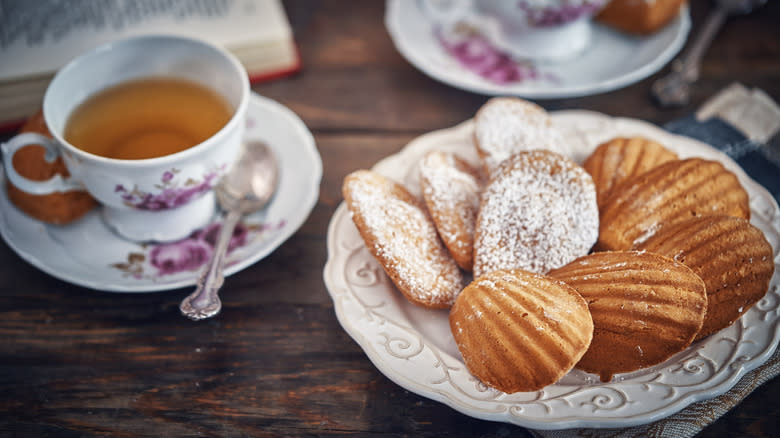The Biggest Mistake You're Making When Baking Madeleines

- Oops!Something went wrong.Please try again later.
Madeleines, the famously delicate, puffy, French tea cakes, boast a rich history intertwined with the lore of literature. Widely believed to have been popularized by Marcel Proust in his novel "À la recherche du temps perdu" ("Remembrance of Things Past"), these small, seashell-shaped treats have become synonymous with elegance and refinement in the world of baking. However, these are no ordinary chic gâteaux you can toss together in a few minutes. The cushiony batter requires plenty of time in the fridge before it meets the oven.
To grasp the significance of chilling the batter when baking madeleines, it's essential to delve into the science behind their preparation. The traditional recipe calls for a handful of basic ingredients, each playing a role in achieving their distinctive characteristics. Flour, sugar, eggs, and butter are the cornerstones. These ingredients are often enhanced with vanilla extract and lemon zest for brightness. The recipe's simplicity emphasizes the need for precise execution to unlock the full potential of the miniature delights.
Chilling the batter is a pivotal step in the process. For one, refrigerating the mixture allows the fats in the butter to solidify. This step yields a firm, tender texture, and a more defined shell shape. The end product is a beautifully formed madeleine with a crisp exterior and a soft, spongy interior. Madeleines are a juxtaposition that defines the allure of these petite pastries.
Read more: 12 Popular Ice Cream Brands, Ranked Worst To Best
Madeleine Batter Must Be Appropriately Chilled

Understanding the chronicles of madeleines adds an extra layer of mystique and appreciation for their meticulous formula. Dating back to the 17th century, these cakes have evolved from a humble household treat to a symbol of French artistry, especially as it relates to gastronomy. Enjoyed by all walks of life since their debut, madeleines have remained legendary. The association with Proust's literary masterpiece further elevated their status as not just a dessert but a cultural icon.
Failure to chill the dough adequately is a common rookie mistake that can lead to some pretty disappointing outcomes. Without spending enough time in the refrigerator, the butter stays too soft, which may lead to spreading during baking. A lack of structure could compromise the distinctive shell shape. Even when you carefully pop madeleines out of their special molds, the madeleines may deflate and end up resembling flat, run-of-the-mill cookies rather than the eye-catching creations they are designed to be. The absence of proper chilling can also greatly impact their overall texture and flavor, resulting in a less nuanced taste.
The importance of chilling the batter when baking a batch of sweet madeleines lies in the alchemy of the ingredients as well as the technique. This crucial step not only preserves the integrity of the cakes' renowned shape but also forces one to practice patience. Madeleines embody the essence of rigor and clarity in baking and are a testament to the blend of tradition, culinary chemistry, and craftsmanship.
Read the original article on Mashed.

